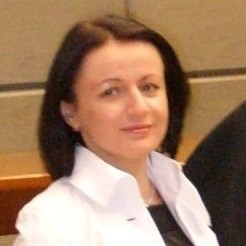Models and Directions of Education in Technical and Technological Aspects of Renewable Energy Sources (RES)
A special issue of Energies (ISSN 1996-1073). This special issue belongs to the section "C: Energy Economics and Policy".
Deadline for manuscript submissions: closed (30 November 2022) | Viewed by 5845
Special Issue Editors
Interests: optimization of the production of biogas from waste and agricultural biomass; the bidder’s development for fertilizer and energy purposes; biogas production from the organic fraction of municipal waste
Special Issues, Collections and Topics in MDPI journals
Interests: spatial and environmental framework for RES developmentl operation and reliability of RES systems; sustainable development; economic efficiency of innovative projects, management
Special Issues, Collections and Topics in MDPI journals
Interests: education, political and legal framework for the public funding of innovative RES projects; technological cooperation; innovation partnerships; technology transfer; sustainable development; economic efficiency of innovative projects
Special Issues, Collections and Topics in MDPI journals
Interests: educational technology; innovation and technological cooperation; technology acceptance and sustainability, assessment simulation
Special Issue Information
Dear Colleagues,
As the Guest Editor, I kindly invite you to submit your papers to a Special Issue of Energies on “Models and Directions of Education in Technical and Technological Aspects of Renewable Energy Sources (RESs)”.
The increased popularity of renewable energy sources (RESs) has given rise to a growing number of RES-based power production facilities and installations. The increasing presence of these investments is one of the key factors shaping the landscape, and the perception of RESs.
In this era of a dynamically growing demand for energy, so-called energy education, or even renewable energy sources education, becomes a new obligatory part of both formal and informal education in all countries of the world.
The said education must emphasize practical application and commitment to acquiring technical and technological skills to perform complex operations related to harnessing solar, wind, biomass, and geothermal energy.
In this context, research on the identification of new educational models as well as the development and implementation of integrated technical and technological RES tools is important.
High-quality papers that explore this area and provide emerging solutions and visions for future research activities are sought. Theoretical and empirical studies, as well as state-of-the-art surveys, are welcome. Prospective authors are invited to submit manuscripts for review for publication in this Special Issue.
Topics that will be included in the publication could include:
- Energy education;
- Renewable energy sources education;
- Formal and informal education on RESs;
- Social aspects of RES popularization;
- Technical and technological skills in RESs;
- Educational networks in the RES sector;
- System instruments for education on RESs;
- Integration of RESs into current and future education systems;
- Comparative studies of educational models in RESs;
- Technical and technological innovations in RESs;
- Development trends in the RES sector;
- Best practice platforms in the RES sector;
- Corporate social responsibility;
- Local and regional conditions of RESs development;
- Smart regional specializations;
- Entrepreneurial process of discovery;
- Support mechanisms for the RES sector;
- Prosumer policy.
Prof. Dr. Anna Szeląg-Sikora
Dr. Zofia Gródek-Szostak
Dr. Luis Ochoa Siguencia
Guest Editors
Manuscript Submission Information
Manuscripts should be submitted online at www.mdpi.com by registering and logging in to this website. Once you are registered, click here to go to the submission form. Manuscripts can be submitted until the deadline. All submissions that pass pre-check are peer-reviewed. Accepted papers will be published continuously in the journal (as soon as accepted) and will be listed together on the special issue website. Research articles, review articles as well as short communications are invited. For planned papers, a title and short abstract (about 100 words) can be sent to the Editorial Office for announcement on this website.
Submitted manuscripts should not have been published previously, nor be under consideration for publication elsewhere (except conference proceedings papers). All manuscripts are thoroughly refereed through a single-blind peer-review process. A guide for authors and other relevant information for submission of manuscripts is available on the Instructions for Authors page. Energies is an international peer-reviewed open access semimonthly journal published by MDPI.
Please visit the Instructions for Authors page before submitting a manuscript. The Article Processing Charge (APC) for publication in this open access journal is 2600 CHF (Swiss Francs). Submitted papers should be well formatted and use good English. Authors may use MDPI's English editing service prior to publication or during author revisions.
Keywords
- energy
- educational process
- digital transformation
- RES techniques and technologies
- CSR
- innovation
- entrepreneurship
- regional development
- prosumer policy
Benefits of Publishing in a Special Issue
- Ease of navigation: Grouping papers by topic helps scholars navigate broad scope journals more efficiently.
- Greater discoverability: Special Issues support the reach and impact of scientific research. Articles in Special Issues are more discoverable and cited more frequently.
- Expansion of research network: Special Issues facilitate connections among authors, fostering scientific collaborations.
- External promotion: Articles in Special Issues are often promoted through the journal's social media, increasing their visibility.
- e-Book format: Special Issues with more than 10 articles can be published as dedicated e-books, ensuring wide and rapid dissemination.
Further information on MDPI's Special Issue polices can be found here.








